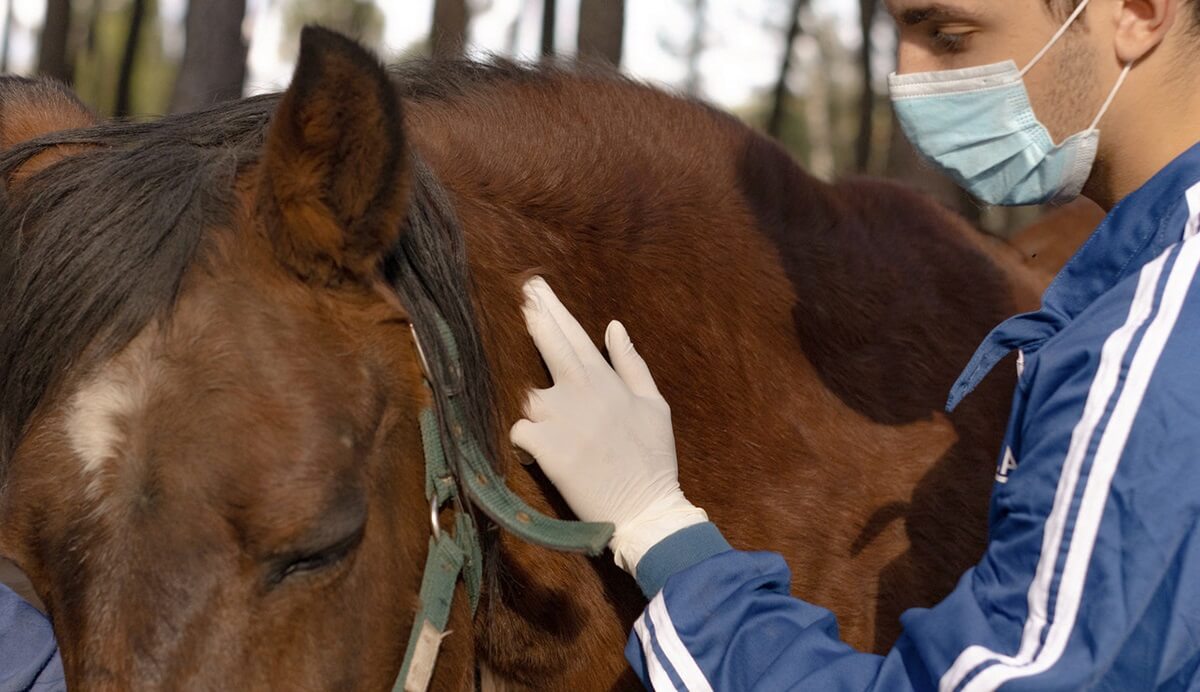How to Take, Measure and Track Key Vital Signs
By Meriel Moore-Colyer for Haygain
Maintaining good health in our horses is every owner’s responsibility. Avoiding performance-limiting viruses, preventing the development of more serious diseases, and ensuring your horse is content and living as natural a life as possible should be everyone’s top priority.
Objectively monitoring your horse’s health daily will make you acutely aware of his “normal” vital statistics and improve your ability to detect any emerging problems. It will also help you build a better understanding of physiology and deepen your connection with your horse. Alongside the normal subconscious observational overview we all do each morning (pricked ears, eating normally, interested in life, clear eyes and clear nostrils) there are several objective signs of good health that are easily monitored. When taking the following measurements, make sure you do these before exercise or several hours after the work session so you are truly measuring resting values.
How to Take Your Horse’s Pulse
Pulse rate is an easy and accurate indicator of heart rate (HR). Normal pulse rate is approximately 30-–40 beats per minute, although your horse may be slightly outside this range. Daily monitoring will help you establish what is normal for your horse, but a variation of 5 beats per minute is normal.
Take the pulse with your fingers lightly pressing on the mandibular artery just under the big cheek bone. It is easiest to count the pulses for 15 seconds and then multiply by 4. As a horse gets fitter, the resting HR will slow slightly, although not as much as occurs in fit humans.
A small rise in heart rate may indicate some external stimulation/excitement/anticipation, so take the pulse during quiet times and initially a few times each day until you find the norm for your horse. A rise above 40 beats/minute should be monitored carefully as this likely indicates pain. If it remains high throughout the day, veterinary attention should be sought. A resting HR of 60 beats per minute should send you running for the phone because your horses is severely ill.
How to Take Your Horse’s Respiration Rate
Horses at rest breathe between 8–15 breaths per minute. Take this by standing a safe distance slightly behind and to the side of your horse and count the number of rises/expansions of the rib cage for 30 seconds and then multiply by 2.
While doing this, listen and watch the pattern very carefully. A breath consists of the inhalation and exhalation phase, and these should be equal in length. Horses with respiratory conditions often have a noisy and “pushing” action to the exhalation.
A higher environmental temperature can cause an increase in respiratory rate as heat dissipation via the exhalation of warm air from the lungs is an important cooling mechanism for the horse. If the respiratory rate has increased due to heat, it’s likely that he will also be sweating, albeit slightly, so check behind his ears and elbows to ensure the rise is due to mild heat stress.
A rise in resting respiratory rate indicates an illness or pain. When recording it, take note of the nostrils and any secretions. A clear or very slightly cloudy discharge is normal, but yellow/green thick mucus indicates disease or allergy. Your horse should not cough at all if he is healthy. I often hear people say, “He coughs a couple of times at the beginning of exercise just to clear himself.” This is not normal for a horse and indicates a viral infection or an allergic respiratory disorder. If your horse does cough, even just periodically, you need to get him onto a dust-free regime as soon as possible to avoid the development of a longer-term allergic respiratory disorder.
How to Take Your Horse’s Temperature
The normal range for a horse at rest is 99–101ºF or 37.2–38.3ºC. Again, environmental conditions can alter this slightly with a rise of approximately 3º F during very hot weather. Stress and exercise will also cause a slight rise.
Take the temperature initially several times a day to find the norm. Taking the temperature is best done rectally. Stand slightly to the side behind your horse and gently move the tail to one side. Using a lubricated thermometer, gently insert into the rectum slightly to the side. It is best to lightly press the thermometer against the side of the rectum to ensure you are recording the body temperature and not the temperature of the feces.
The length of time you hold it there will depend on the type of thermometer (a mercury thermometer takes approximately 3 minutes). If you are using a mercury thermometer, make sure you shake it well before inserting. Whatever type you use, hold on tight, especially the first few times you do this, as many horses have a reflex action that can suck the thermometer into the rectum very quickly! Clean the thermometer thoroughly after each use. A rise above 102ºF is cause for concern, so call your vet.
In the next issue, we’ll continue the discussion and learn how to evaluate gut sounds, measure feed and water intake, appraise mucous membranes, and make monitoring your horse a daily habit. In the meantime, start practicing pulse, respiration, and temperature. Your horse (and your veterinarian) will thank you!
Meriel Moore-Colyer is an equine science professor and equine nutrition expert.
Article provided compliments of Haygain. For more great content in their Horse Health Library, visit www.haygain.us
Read Part 2 Here: https://nwhorsesource.com/equine-wellness-know-your-horses-normal-part-2
See this article in the September/October 2023 online edition:
September/October 2023

The Northwest Horse Source is an independently owned and operated print and online magazine for horse owners and enthusiasts of all breeds and disciplines in the Pacific Northwest. Our contemporary editorial columns are predominantly written by experts in the region, covering the care, training, keeping and enjoyment of horses, with an eye to the specific concerns in our region.






